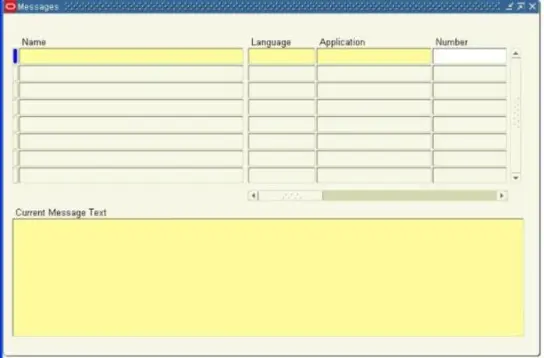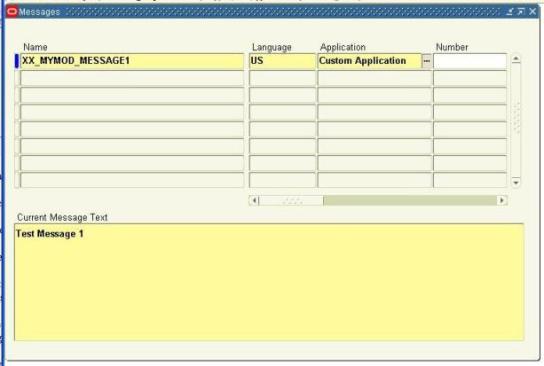SELECT papf.employee_number, papf.full_name,
ppa.payroll_action_id
|| ' : '
|| con.consolidation_set_name
|| ' => Run Date: '
|| ppa.creation_date payroll_action,
pet.element_name, SUM (pc.costed_value) credit, TO_NUMBER ('0')
debit,
pcak.segment1, pcak.segment2, pcak.segment3 ACCOUNT,
(SELECT description
FROM fnd_flex_values_vl f
WHERE flex_value_set_id = 1013546
AND f.flex_value_meaning = pcak.segment3
AND ROWNUM < 2) "Account Meaning",
pcak.segment4, pcak.segment5, pcak.segment6,
ppa.creation_date run_date, ppa.effective_date
FROM per_all_people_f papf,
per_all_assignments_f paf,
pay_assignment_actions paa,
pay_payroll_actions ppa,
pay_payrolls_f ppay,
pay_personal_payment_methods_f pppm,
pay_external_accounts pea,
pay_costs pc,
pay_cost_allocation_keyflex pcak,
pay_input_values_f piv,
pay_element_types_f pet,
pay_consolidation_sets con
WHERE papf.person_id = paf.person_id
AND paf.business_group_id = 81
AND ppa.payroll_id = ppay.payroll_id
AND paa.assignment_id = paf.assignment_id
AND paa.payroll_action_id = ppa.payroll_action_id
AND pc.assignment_action_id = paa.assignment_action_id
AND pppm.assignment_id(+) = paf.assignment_id
AND pppm.external_account_id = pea.external_account_id(+)
AND pcak.cost_allocation_keyflex_id = pc.cost_allocation_keyflex_id
AND pet.element_type_id = piv.element_type_id
AND piv.input_value_id = pc.input_value_id
AND con.consolidation_set_id = ppa.consolidation_set_id
AND pet.business_group_id = paf.business_group_id
AND papf.business_group_id = paf.business_group_id
AND ppa.action_status = 'C'
AND ppa.action_type = 'C'
-- AND Trunc(SYSDATE) = Trunc(Ppa.Creation_Date)
AND TRUNC (SYSDATE) BETWEEN TRUNC (pet.effective_start_date)
AND TRUNC (pet.effective_end_date)
AND LEAST
(xx_hr_general_pkg.get_termination_date (paf.person_id,
paf.business_group_id
),
TRUNC (SYSDATE)
) BETWEEN TRUNC (paf.effective_start_date)
AND TRUNC (paf.effective_end_date)
AND TRUNC (SYSDATE) BETWEEN TRUNC (papf.effective_start_date)
AND TRUNC (papf.effective_end_date)
AND LEAST
(xx_hr_general_pkg.get_termination_date (paf.person_id,
paf.business_group_id
),
TRUNC (SYSDATE)
) BETWEEN NVL (TRUNC (pppm.effective_start_date),
TO_DATE ('01-JAN-1980')
)
AND NVL (TRUNC (pppm.effective_end_date),
TO_DATE ('31-DEC-4000')
)
AND TRUNC (SYSDATE) BETWEEN TRUNC (ppay.effective_start_date)
AND TRUNC (ppay.effective_end_date)
AND pc.debit_or_credit = 'C'
-- AND Ppa.payroll_action_id = &P_Pay_Action_Id
-- AND Paf.payroll_id = :P_Payroll_Id
GROUP BY papf.employee_number,
papf.full_name,
ppa.payroll_action_id
|| ' : '
|| con.consolidation_set_name
|| ' => Run Date: '
|| ppa.creation_date,
pet.element_name,
pcak.segment1,
pcak.segment2,
pcak.segment3,
pcak.segment4,
pcak.segment5,
pcak.segment6,
ppa.creation_date,
ppa.effective_date
UNION
SELECT papf.employee_number, papf.full_name,
ppa.payroll_action_id
|| ' : '
|| con.consolidation_set_name
|| ' => Run Date: '
|| ppa.creation_date payroll_action,
pet.element_name, TO_NUMBER ('0') credit, SUM (pc.costed_value)
debit,
pcak.segment1, pcak.segment2, pcak.segment3 ACCOUNT,
(SELECT description
FROM fnd_flex_values_vl f
WHERE flex_value_set_id = 1013546
AND f.flex_value_meaning = pcak.segment3
AND ROWNUM < 2) "Account Meaning",
pcak.segment4, pcak.segment5, pcak.segment6,
ppa.creation_date run_date, ppa.effective_date
FROM per_all_people_f papf,
per_all_assignments_f paf,
pay_assignment_actions paa,
pay_payroll_actions ppa,
pay_payrolls_f ppay,
pay_personal_payment_methods_f pppm,
pay_external_accounts pea,
pay_costs pc,
pay_cost_allocation_keyflex pcak,
pay_input_values_f piv,
pay_element_types_f pet,
pay_consolidation_sets con
WHERE papf.person_id = paf.person_id
AND paf.business_group_id = 81
AND ppa.payroll_id = ppay.payroll_id
AND paa.assignment_id = paf.assignment_id
AND paa.payroll_action_id = ppa.payroll_action_id
AND pc.assignment_action_id = paa.assignment_action_id
AND pppm.assignment_id(+) = paf.assignment_id
AND pppm.external_account_id = pea.external_account_id(+)
AND pcak.cost_allocation_keyflex_id = pc.cost_allocation_keyflex_id
AND pet.element_type_id = piv.element_type_id
AND piv.input_value_id = pc.input_value_id
AND con.consolidation_set_id = ppa.consolidation_set_id
AND pet.business_group_id = paf.business_group_id
AND papf.business_group_id = paf.business_group_id
AND ppa.action_status = 'C'
AND ppa.action_type = 'C'
AND TRUNC (SYSDATE) BETWEEN TRUNC (pet.effective_start_date)
AND TRUNC (pet.effective_end_date)
AND LEAST
(xx_hr_general_pkg.get_termination_date (paf.person_id,
paf.business_group_id
),
TRUNC (SYSDATE)
) BETWEEN TRUNC (paf.effective_start_date)
AND TRUNC (paf.effective_end_date)
AND TRUNC (SYSDATE) BETWEEN TRUNC (papf.effective_start_date)
AND TRUNC (papf.effective_end_date)
AND LEAST
(xx_hr_general_pkg.get_termination_date (paf.person_id,
paf.business_group_id
),
TRUNC (SYSDATE)
) BETWEEN NVL (TRUNC (pppm.effective_start_date),
TO_DATE ('01-JAN-1980')
)
AND NVL (TRUNC (pppm.effective_end_date),
TO_DATE ('31-DEC-4000')
)
AND TRUNC (SYSDATE) BETWEEN TRUNC (ppay.effective_start_date)
AND TRUNC (ppay.effective_end_date)
AND pc.debit_or_credit = 'D'
-- AND Ppa.payroll_action_id = &P_Pay_Action_Id
-- AND Paf.payroll_id = :P_Payroll_Id
GROUP BY papf.employee_number,
papf.full_name,
ppa.payroll_action_id
|| ' : '
|| con.consolidation_set_name
|| ' => Run Date: '
|| ppa.creation_date,
pet.element_name,
pcak.segment1,
pcak.segment2,
pcak.segment3,
pcak.segment4,
pcak.segment5,
pcak.segment6,
ppa.creation_date,
ppa.effective_date
ORDER BY 1, 2



